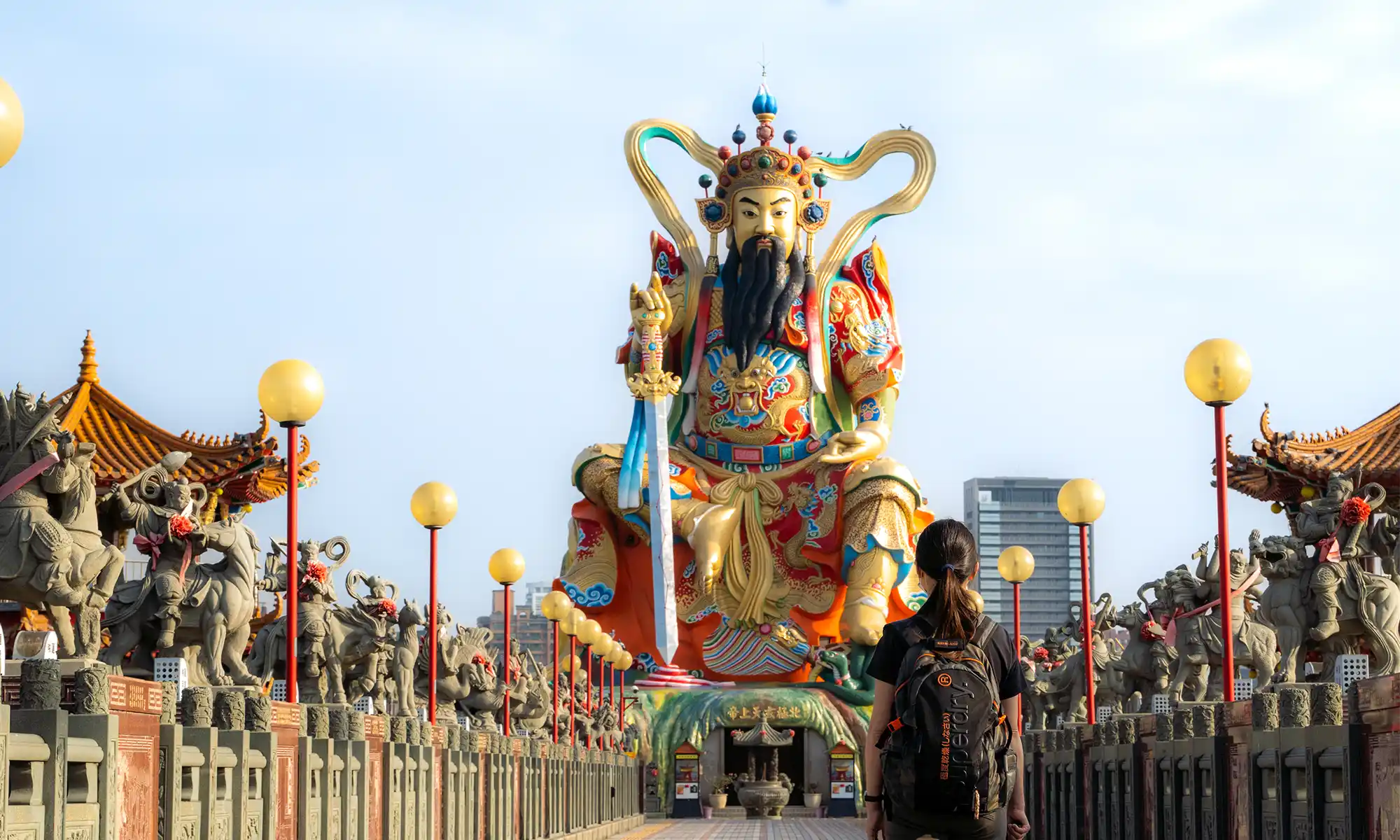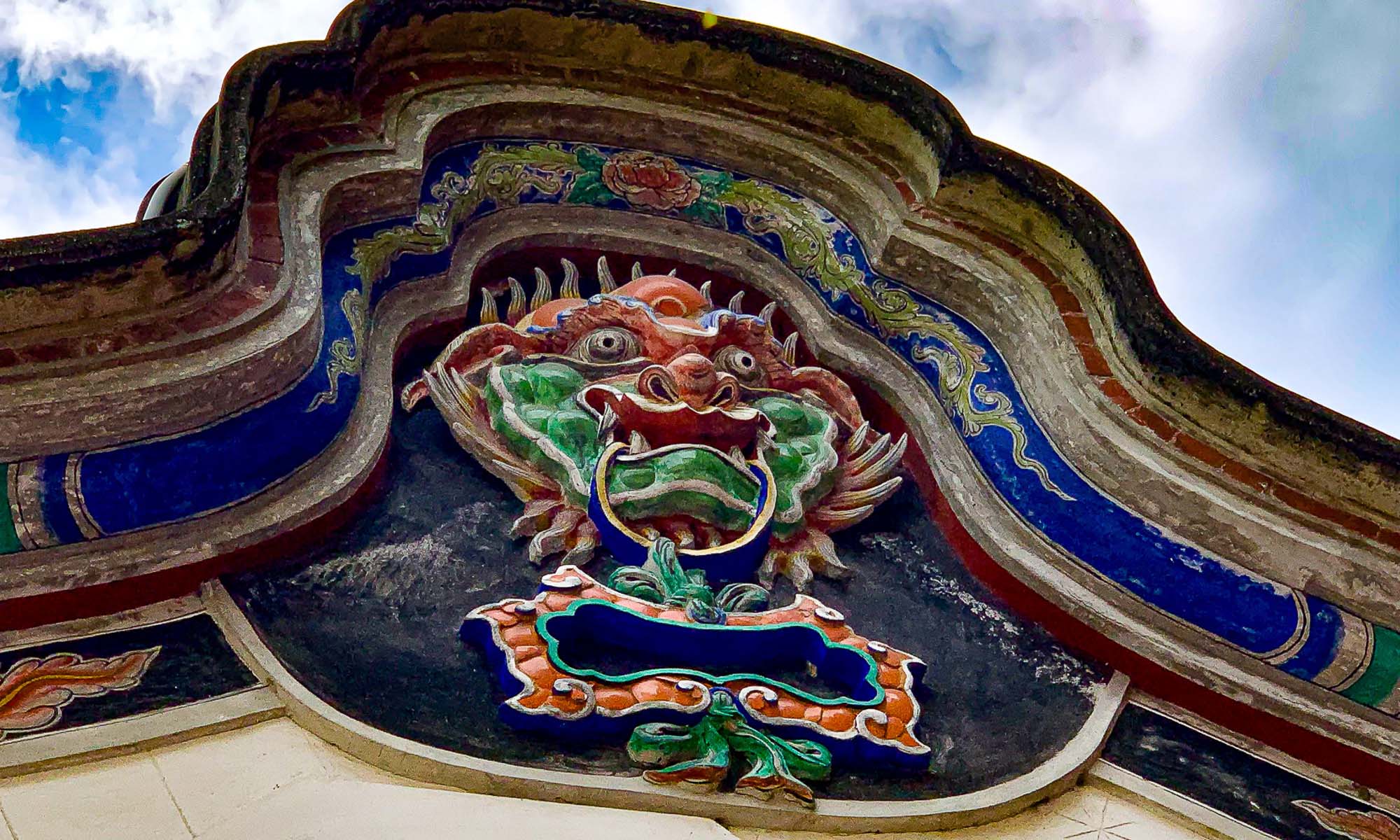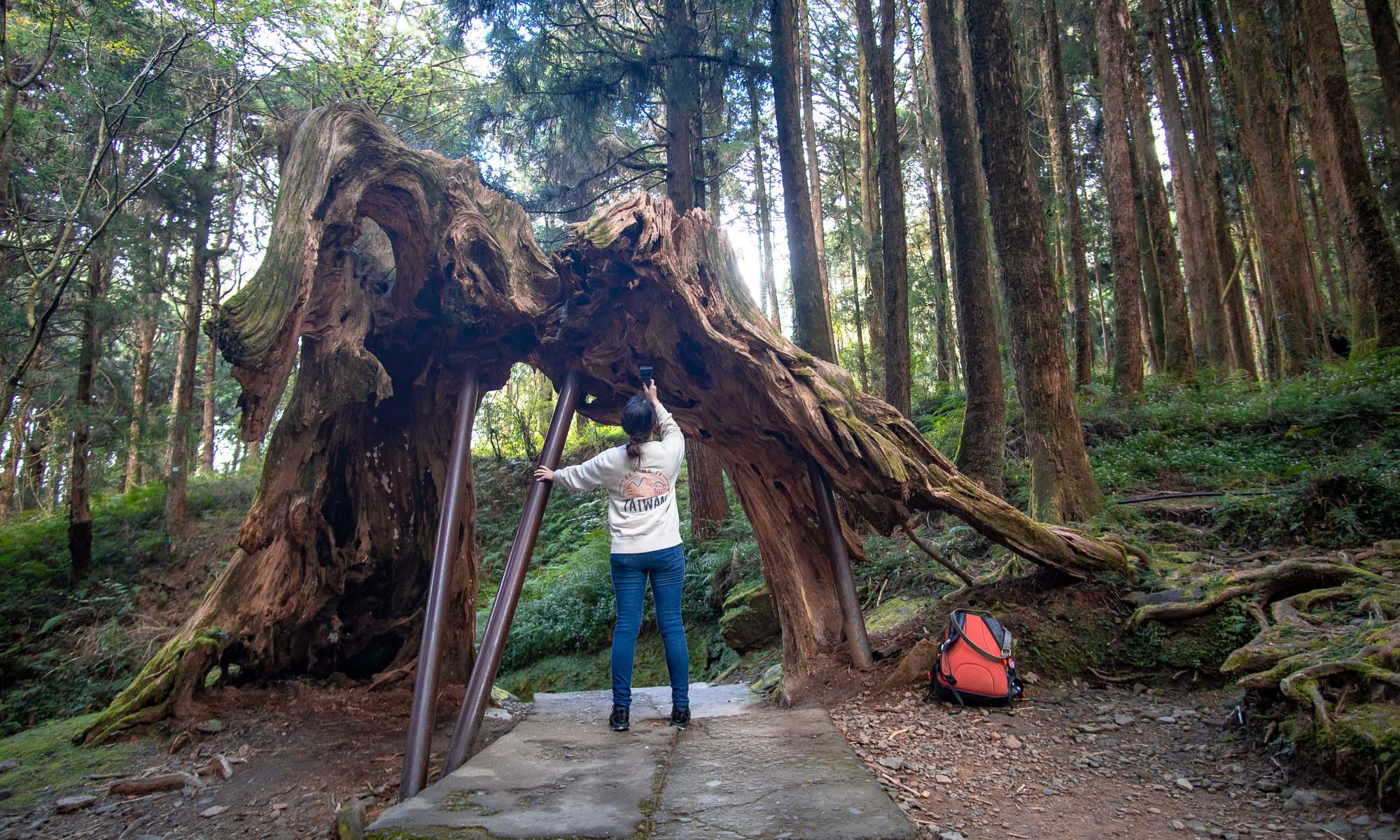ZUOYING LOTUS POND
Lotus Pond, located in Zuoying District, is a quiet man-made pond that has come to symbolize Kaohsiung’s transformation into one of the country’s cultural centers. Surrounded by temples, the area around the pond also features 300-year-old city walls, historic military housing, and is home to a large number of birds, including black-crowned night heron, gray heron, great egret, and little egrets.
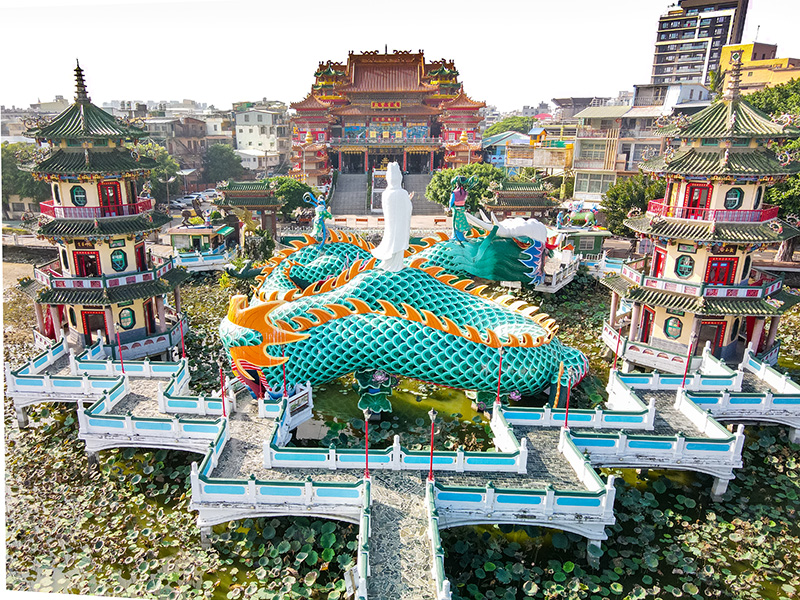
Just like Nantou’s Sun Moon Lake, Lotus Pond is surrounded by a great number of temples. The oldest temple in the area, Kaohsiung Zuoying Confucius Temple, which lies on the northern banks of the pond, was built in 1684. On the western side of the pond, two picturesque and famous temples stand on the calm water: the Spring and Autumn Pavilions and the Dragon and Tiger Pagodas.
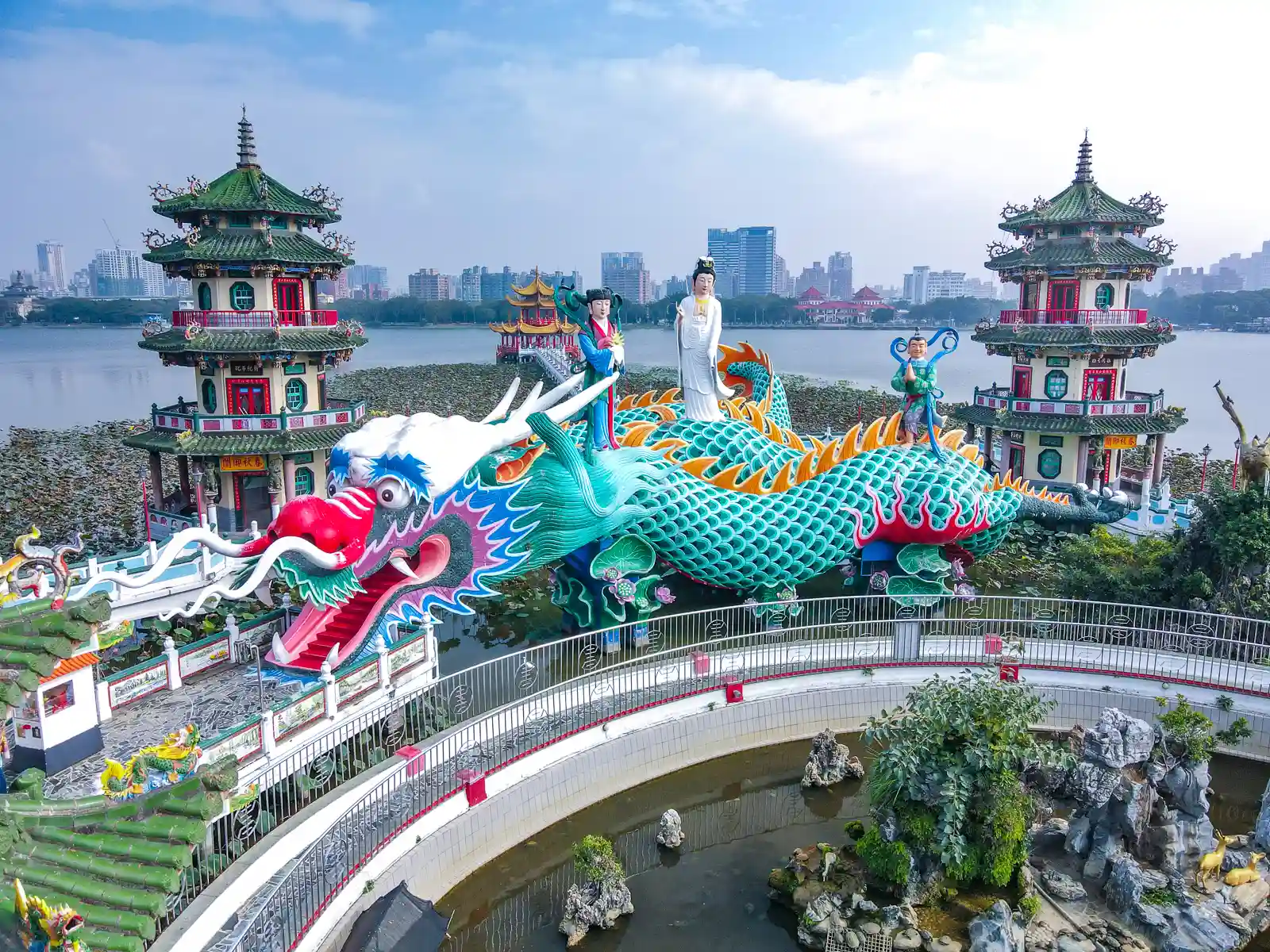
The Spring and Autumn Pavilions are a pair of four-story high octagonal towers connected to each other by a nine-bend bridge. According to legend, construction only began after Guanyin appeared to her followers “riding a dragon through the clouds” and instructed the temple be built. Today, an effigy of Guanyin riding a dragon just as in the legend stands at the temple’s entrance.
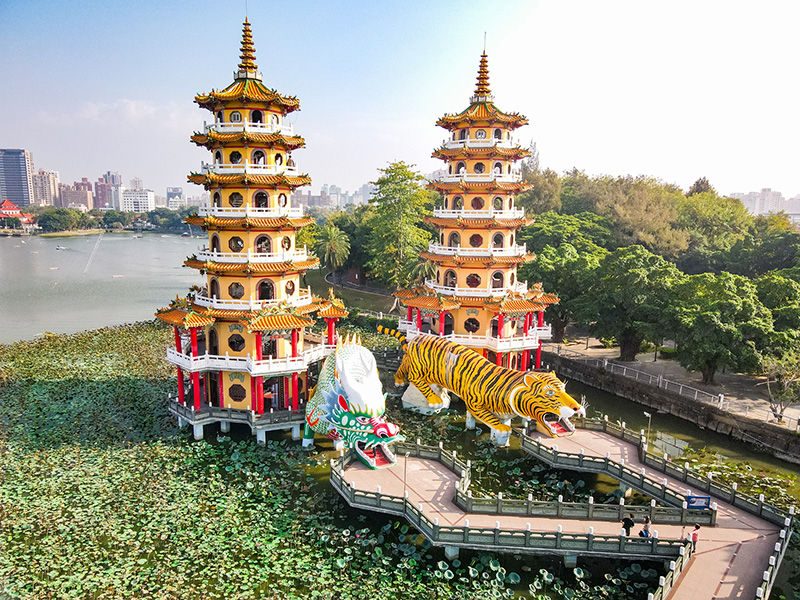
The Dragon and Tiger Pagodas are unique for their entrance and exit is through the mouth of each animal. When visiting the Dragon and Tiger Pagodas, be sure to abide by the lucky custom: enter through the dragon’s mouth, and exit through the tiger’s mouth. Following this order is local custom and can reverse bad luck.
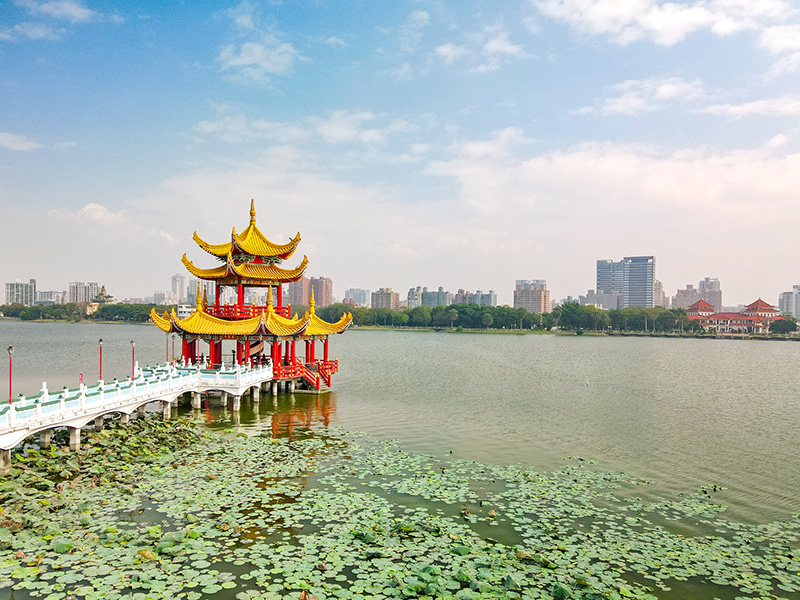
Dragons and tigers are often used symbols in Taiwanese religious architecture for their “equal strength”. Along with “fengshui”, they are important elements that can be used to create balance when constructing temples.

